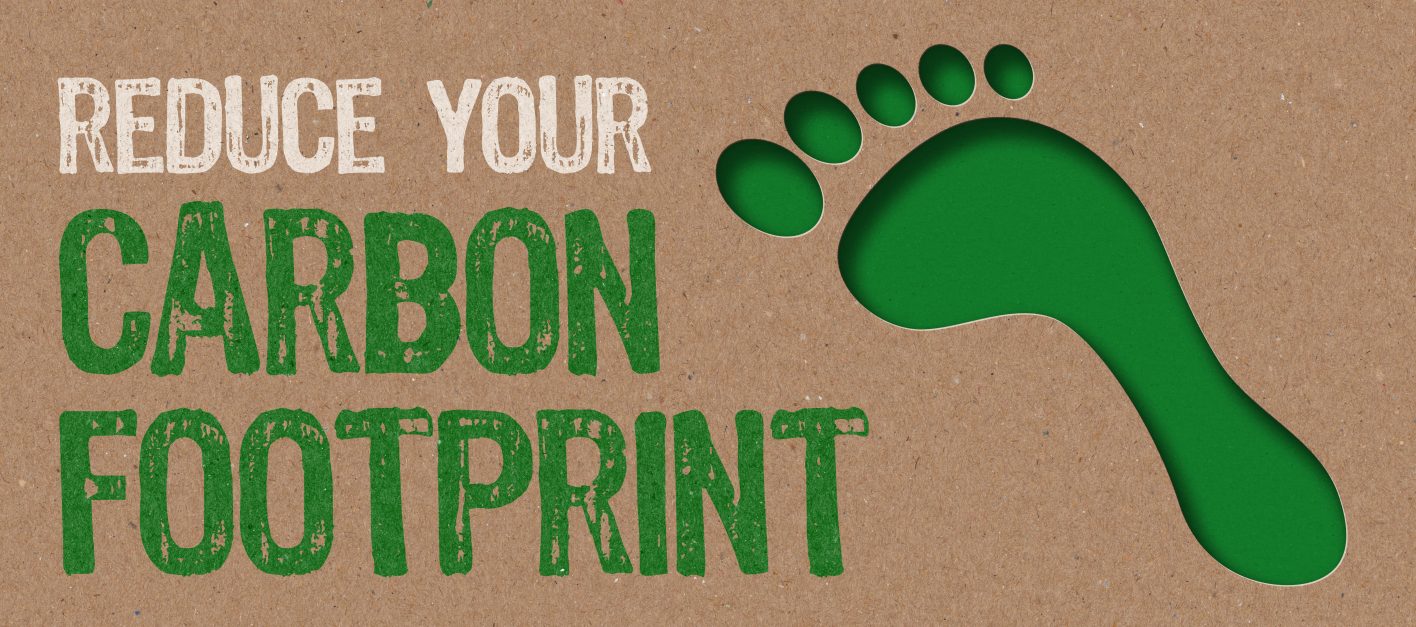
It is not hard to find out what your carbon footprint is, and it’s even easier to change it.
We’ve been hearing and using a new phrase in our vocabulary for a few years now: carbon footprint. What does this phrase mean and how does it apply to us personally?
What’s a Carbon Footprint?
Simply put a carbon footprint is the direct and indirect greenhouse gases left behind by producers and consumers as they go about daily life on planet Earth. When thinking of your carbon footprint, keep in mind that CO2 (carbon dioxide) is the main contributor of GHG (greenhouse gases) and one cause of global warming. One footprint may not seem like much, but each of us creates a carbon footprint and when added to the population as a whole we see the big picture is astounding. To change our footprint, it helps to know what we are doing to create our footprint in the first place. Your everyday life produces your footprint. Your home is the largest contributor, followed by your car, food, housing, medical services, etc.
Calculate and Reduce Your Footprint
Calculating your footprint is not that hard. The EPA (Environmental Protection Agency) offers an online Footprint Calculator. With a few simple clicks, you can get an idea of where you stand among typical households. Another tool of interest is a downloadable spreadsheet to help us track our footprint. Use your monthly electric bill to enter your KwH, enter the number of miles flown on an airliner, enter the amounts from your gas bill, miles driven by car, etc, and when the year is done you have your total yearly footprint.
Once you have a number you can identify your problem areas and see how you stack up against the most current standards. Two benefits of keeping track of and changing your footprint are the reduction of your impact on the planet and saving money.
Global solutions are being created to help the population of the Earth cleans up our global emissions in the future. Electric cars, the solar, wind, and geothermal energy sources are being put in place in most of the developed countries of the world. However, you can decrease your footprint almost immediately.
Six Simple Steps
Use Less Energy
Change the light bulbs in your lamps and overhead lights to the energy-saving fluorescent type, turn down the thermostat, use Energy Star-rated appliances, and turn off and unplug appliances and electronics when not in use. Use a power strip, it’s helpful when turning off a group of items such as a computer and all the components. When you leave the room turn off the lights, and try not to use lights during daylight hours when possible. Weatherproofing your home makes a big difference in the amount of heating and cooling your home will need. Replace old windows and doors with energy-efficient ones. The big energy hogs of the home are the heating and cooling systems, the fridge, the water heater, and the home electronics.
Drive Less and Make One Trip Do It All
Run errands on your way to or from work and avoid extra trips by making shopping lists. Ask a friend if you can ride along, this reduces your gas consumption by half. Keep your car air filter clean and the tires properly inflated. If you are planning to purchase a new car go for an electric car or a hybrid. Is your car too big? Downsize to a smaller vehicle for better gas mileage. Using mass transit whenever possible reduces your transportation footprint.
Produce Clean Water on Your Own
You can make your clean water at home instead of buying it in plastic bottles. Boil or filter your tap water and then fill your reusable bottle. Bring your shopping bags to the store: they are stronger than plastic bags, and this reduces your footprint by one kg of CO2.
Recycle
Reduce your household waste by recycling aluminium, steel, copper, plastics, glass, cardboard, and paper. Check with your local recycling centres to learn about all the items they are recycling. Don’t forget to compost vegetable and yard waste.
Eat Fewer Fast Foods
It can help to reduce the impact this production has on your footprint. The fossil fuels used to plant, fertilise, harvest, and transport the grains used to feed animals that will be slaughtered for food increase CO2 emissions. The less we consume the lower the impact. Buying local helps too. Food produced in California and trucked to the east coast add CO2 to the air.
Air Travel Less
Although most air travel is for business and doesn’t count toward your footprint, it still makes a huge impact on the planet. Ask your boss to arrange more video conference meetings to reduce the footprint of your job. Try to book one flight instead of two or three connector flights, take-off and landing use a large amount of jet fuel. When it’s time for your vacation consider other forms of transportation. Plan to limit the amount of fuel consumption such as preparing your route keeping the least fuel consumption in mind or consider renting a hybrid for your trip. One plane trip emissions are equivalent to a typical year of driving a car.
Be the Change
Now that you know more about how your footprint contributes to GHG and global warming I hope you will implement these six simple steps into your daily life and reduce your footprint. We are all stewards of this planet and we need to stop waiting for governments and the other guys to make a change and make that change ourselves.
About the author: Diane H. Wong is a content writer at essaywritercheap.org. She works out different marketing strategies. In this case, she has an opportunity to share her experience with others and keep up with advancing technologies.
Visit The Sustain Chain today for excellent FREE resources and support!

